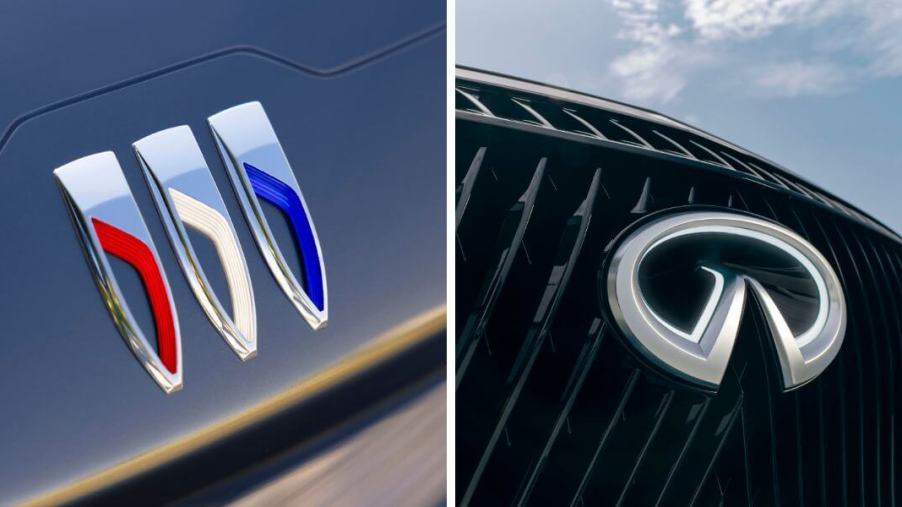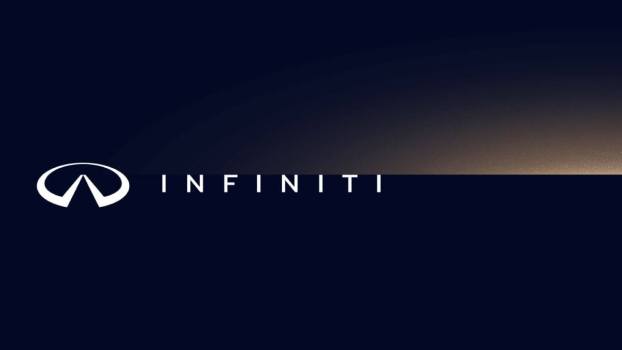
Here’s Why the Buick Rebrand Is Succeeding Where Infiniti’s Attempt Fails
In the luxury automotive marketplace, two storied brands are going through a rebranding effort to gain a more widespread appeal. Unfortunately, only one of these brands is succeeding in their efforts.
Buick, one of the oldest American automotive brands, has been struggling stateside but largely succeeding in overseas sales in China. Infiniti, the luxury division of Nissan, had some solid success initially in the late 1980s, but recently, it has remained relatively dormant in sales. So, what exactly are these two automotive brands doing to refresh their companies, and why is Buick having so much more success? Here is everything you need to know about the rebranding efforts of Buick and Infiniti.
Buick finds serious success in a new identity
For years, Buick has been known as a vehicle for older consumers. However, it was not always that way. From the muscle car era of the 1960s through the NASCAR-influenced Grand National era of the 1980s, Buick was also known for performance as well as luxury. Through the 1990s, Buick became known for its luxury cruisers that offered luxury at near-Cadillac levels but at a much cheaper price point. Since then, sales have slumped in the American marketplace, but with steady sales overseas, Buick has stayed afloat. With its rebrand, Buick is looking to reclaim its image in its home country.
According to Buick, one of its first rebranding efforts started with the logo, which removed the halo around the tri-shield logo and arranged the shields in a straight line. This logo was also present on the Buick Wildcat EV, and it is more in line with other simple logos from Kia and Tesla, two more prominent players in the EV marketplace. The Buick design language has also been revamped, offering sharper lines and fewer curves than before, appealing to a sportier, younger audience. While Buick still offers gas-powered vehicles, this angular design language will lead to future EV projects. With this rebrand, Buick has experienced a near-doubling in sales. With Buick back on the map for many consumers, the future is looking good for this American mainstay automotive brand.
Infiniti is rebranding but remains tone-deaf to consumers
If there is any way to describe the Infiniti brand in one word, it would be “inconsistent.” Infiniti started very well in the 1980s. Following the success of Acura, Nissan decided to offer its luxury subbrand as Infiniti in 1989. This early Infiniti would make the Q45 sedan and the sporty M30 coupe, and initially, it was as well-known and respected as Acura and Lexus. As time passed, Infiniti found great success in its G-series, a line of luxury sports coupes that were equally appealing to executives looking for a commuter, and tuners who wanted a more luxurious alternative to Hondas and Toyotas. However, since 2017, Infitini has been in trouble, losing more and more in sales every year.
To right the ship, Infiniti has decided to rebrand with a new, more refined logo and a signature smell. Yes, you read that correctly. Infiniti seems to believe that what it has been lacking is a signature smell in its dealerships. Don’t worry, it gets worse, as KBB explains that Infiniti is also attempting to create a brand master track of sounds that will be used throughout advertising and vehicle technology. You may be wondering what vehicles will be found in these new Infiniti showrooms, and you’d be concerned to find that Infiniti has yet to have any new offerings. The brand’s lack of EVs is a glaring misstep for the brand. When it comes down to brass tacks, Infiniti is simply coming across as tone-deaf to its audience. Americans want a brand with an electrification plan, an exciting design language, and a fleet of new vehicles in the near future. Buick is hitting the nail on the head. Infiniti, however, has a lot of catching up to do.




